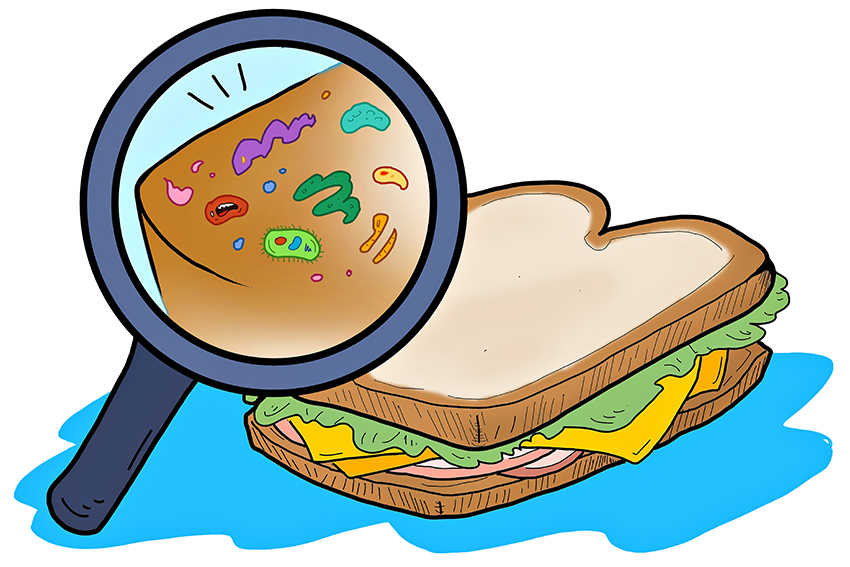My roommate came home the other day and devoured all my leftover pizza. Unbeknownst to her, I brought it home a week ago! I was grossed out that she ate something so old, but she said that since it was refrigerated, it’s all okay. Am I just being a germaphobe?
— Sal Manilla
Sal, you have a right to be disgusted. Every year, 48 million people are infected with foodborne illnesses, according to the U.S. Food and Drug Administration — that’s one in every six people.
While everyone should make it a priority to wash, cook and store foods properly, those with weakened immune systems, such as young children, elderly people and pregnant women, should be extra careful. Read on to keep yourself (and the people you cook with and live with) safe.
Your roommate may have conducted the “smell test” before helping herself to your leftovers. As a college student myself, I totally understand how leftovers can be forgotten in the back of the fridge. But just because there is no colorful growth or appalling odor, does not mean that the food is pathogen-free. Toss the refrigerated to-go box after three to four days.
Was your pizza in the fridge or left out on the counter? Foods kept between 40 and 140 degrees are more apt to develop pathogens. In fact, this range of temperatures is referred to as the “danger zone.” A single bacterium can multiply to trillions between these two temperatures, according to the Academy of Nutrition and Dietetics. Food should not be left in the danger zone for more than two hours. This time is reduced to one hour if the temperature is over 90 degrees — such as potato salad at a picnic. And heads up — more than a third of Americans keep their refrigerator higher than 40 degrees, according to the Academy of Nutrition and Dietetics — time for a fridge thermometer!
While I’m on my food safety soapbox: Wash your hands with warm, soapy water for 20 seconds before eating and preparing food. If numbers aren’t your thing, sing “Happy Birthday” twice. Wash your hands again after touching trash, raw meat or your pets. Additionally, make sure that cooking utensils and cutting boards are clean. A huge source of bacteria: the instrument doing the scrubbing itself. Sponges should be cleaned daily — throw them in the dishwasher or microwave a damp one for one minute.
Fruits and vegetables — even those that you peel — should be washed and scrubbed before consumption. Farming, harvesting, storage and transportation methods could have exposed your food to bacteria. No need for soap — but do make sure to cut off any rotten or bruised areas.
The way you organize your grocery cart is another marker of your food-safety-savviness. Remember to separate, don’t contaminate! Raw meats and eggs should be kept away from other items in your shopping cart and refrigerator. Their juices could leach onto ready-to-eat foods and cause cross-contamination. Raw meats should have separate cutting boards and utensils — so don’t chop produce on the same plate you used when you seasoned your uncooked ground beef.
If you are reading this article while eating lunch, I apologize. Maybe I should have prefaced it with a disclaimer. But, I’m certain you have become more (bacterially) cultured, and will never look at food storage and preparation the same way again.















